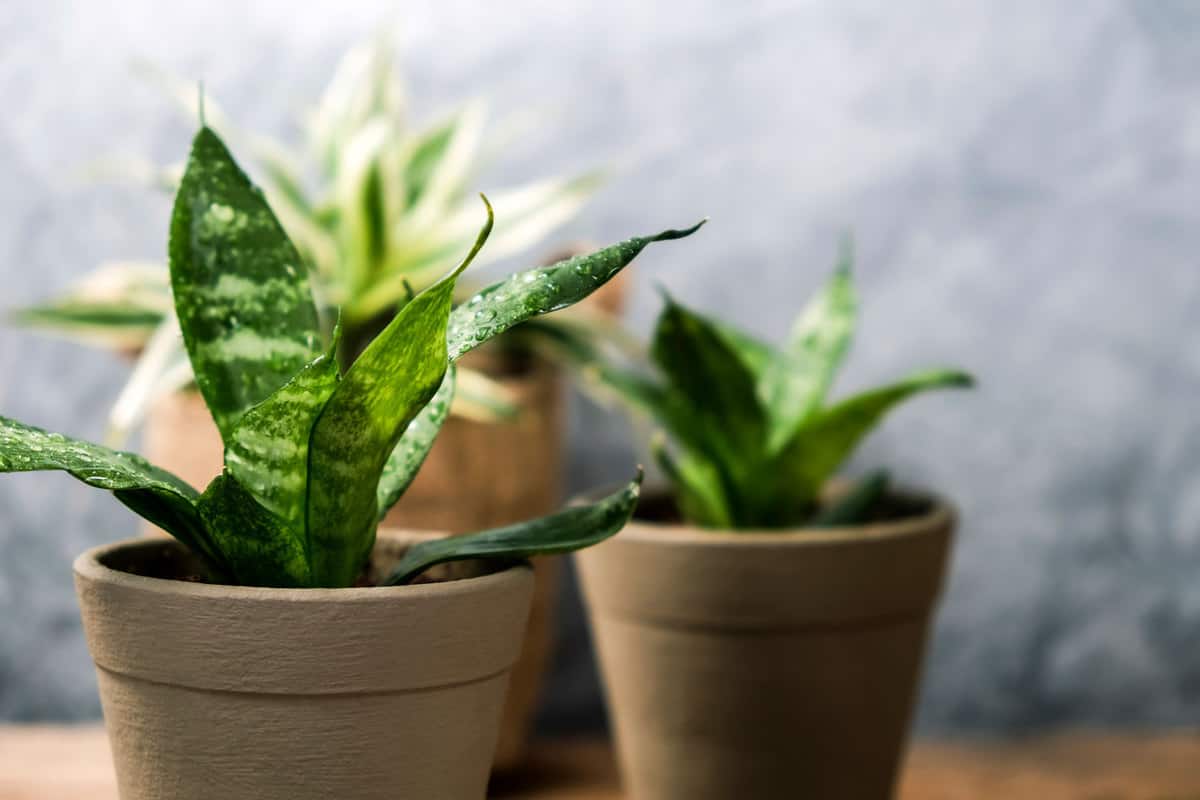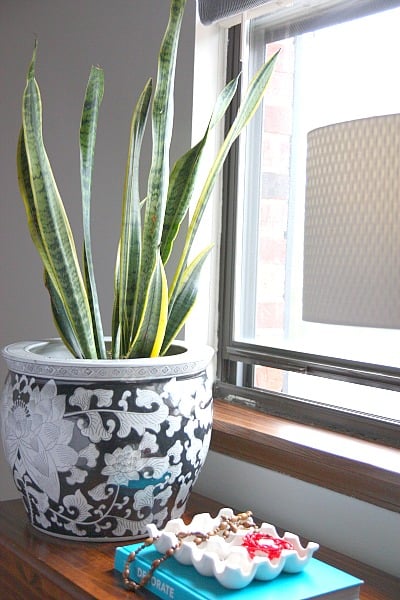


 ‘Whale Fin’ - These interesting snake plants have large, wide leaves that resemble the fin of a whale breaching the water’s surface.Scientifically known as Sansevieria, Snake plants are popular houseplants cherished for their striking appearance, air-purifying abilities, and low maintenance requirements. ‘Starfish Snake Plant’ - The starfish snake plant has cylindrical leaves that fan out from its base, giving it a starfish-like shape. ‘Cylindrical Snake Plant’ - As its name suggests, this species of snake plant has cylindrical leaves that end in a fierce point. ‘Golden Hahnii’ - Like the standard ‘Bird’s Nest’, but with leaves variegated along the edge in yellow. ‘Bird’s Nest’ - Short, wide leaves of dark and light green form a tight nest shape like a bromeliad. Leaves only grow 6 to 8 inches long. This variety does need much light to grow well. ‘Bantel’s Sensation’ - Narrow leaves have white vertical stripes and grow to about 3 feet long. It has tall, dark-green leaves with light grayish-green horizontal stripes. Sansevieria trifasciata) is the most common species of snake plant. Fragrant, greenish-white flower clusters appear on tall spikes. If a snake plant is pot-bound, it may flower occasionally. Cut out a section containing leaves and roots and place it in a pot with a well-draining potting mix. In good conditions, snake plants are rapid growers and may need to be divided annually. The large, flat leaves tend to collect dust wipe them down with a damp cloth as needed. During the winter, while the plant isn’t actively growing, water less often than you would in spring and summer. This encourages the roots to grow downward and deep, helping to stabilize the thick, tall leaves. Water from the bottom of the pot, if possible. Hold off on watering if you feel any moisture or see soil stick to the chopstick. Instead, carefully stick your finger or a wooden chopstick a couple of inches into the soil. Tip: To know when it’s time to water, don’t just rely on how the surface of the soil looks. Let the soil mostly dry out between waterings. To avoid this, follow these watering practices: These plants do not tolerate soggy soil they tend to develop root rot. One of the most common problems encountered with snake plants (and other succulents) is overwatering.
‘Whale Fin’ - These interesting snake plants have large, wide leaves that resemble the fin of a whale breaching the water’s surface.Scientifically known as Sansevieria, Snake plants are popular houseplants cherished for their striking appearance, air-purifying abilities, and low maintenance requirements. ‘Starfish Snake Plant’ - The starfish snake plant has cylindrical leaves that fan out from its base, giving it a starfish-like shape. ‘Cylindrical Snake Plant’ - As its name suggests, this species of snake plant has cylindrical leaves that end in a fierce point. ‘Golden Hahnii’ - Like the standard ‘Bird’s Nest’, but with leaves variegated along the edge in yellow. ‘Bird’s Nest’ - Short, wide leaves of dark and light green form a tight nest shape like a bromeliad. Leaves only grow 6 to 8 inches long. This variety does need much light to grow well. ‘Bantel’s Sensation’ - Narrow leaves have white vertical stripes and grow to about 3 feet long. It has tall, dark-green leaves with light grayish-green horizontal stripes. Sansevieria trifasciata) is the most common species of snake plant. Fragrant, greenish-white flower clusters appear on tall spikes. If a snake plant is pot-bound, it may flower occasionally. Cut out a section containing leaves and roots and place it in a pot with a well-draining potting mix. In good conditions, snake plants are rapid growers and may need to be divided annually. The large, flat leaves tend to collect dust wipe them down with a damp cloth as needed. During the winter, while the plant isn’t actively growing, water less often than you would in spring and summer. This encourages the roots to grow downward and deep, helping to stabilize the thick, tall leaves. Water from the bottom of the pot, if possible. Hold off on watering if you feel any moisture or see soil stick to the chopstick. Instead, carefully stick your finger or a wooden chopstick a couple of inches into the soil. Tip: To know when it’s time to water, don’t just rely on how the surface of the soil looks. Let the soil mostly dry out between waterings. To avoid this, follow these watering practices: These plants do not tolerate soggy soil they tend to develop root rot. One of the most common problems encountered with snake plants (and other succulents) is overwatering. #Snake plant sunlight how to
How to Care for Snake Plants Watering Snake Plants In the winter, be sure to protect it from drafty windows. Keep the plant in a warm spot with temperatures above 50☏ (10☌).

Also be sure to adjust watering habits accordingly plants will use more water in warmer, brighter areas. Whenever you move plants from a darker to a lighter spot, gradually expose them to brighter and brighter light over a week or so. Tip: Try to avoid moving your plant from a low-light area to direct sunlight too quickly, as this can shock the plant.However, they also grow well (albeit more slowly) in shady corners and other low-light areas of the home. Snake plants prefer bright, indirect light and can even tolerate some direct sunlight.The plant should be planted as deep as it had been in its prior container. When repotting snake plants, don’t bury them too deep.A potting mix designed for “cacti and succulents” is ideal, as it will be more resistant to becoming oversaturated with water. Terracotta pots work well for snake plants since they allow the soil to dry out more quickly than plastic pots. Choose a pot with a drainage hole in the bottom.








 0 kommentar(er)
0 kommentar(er)
